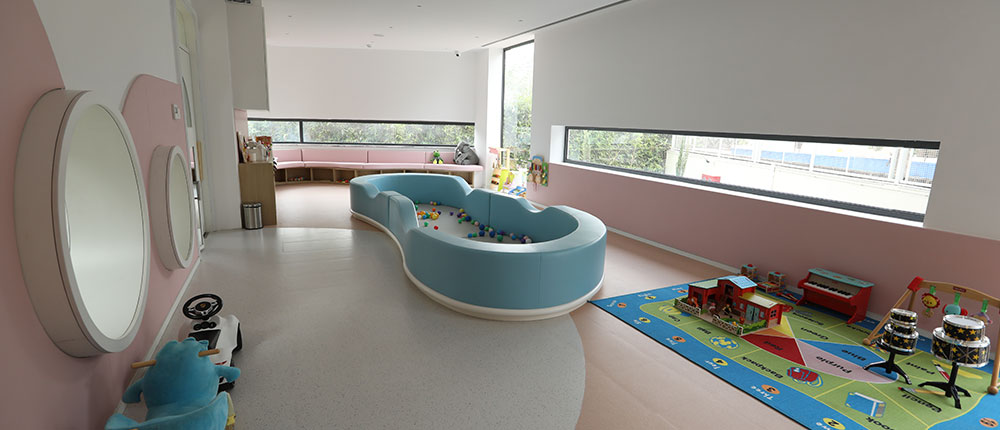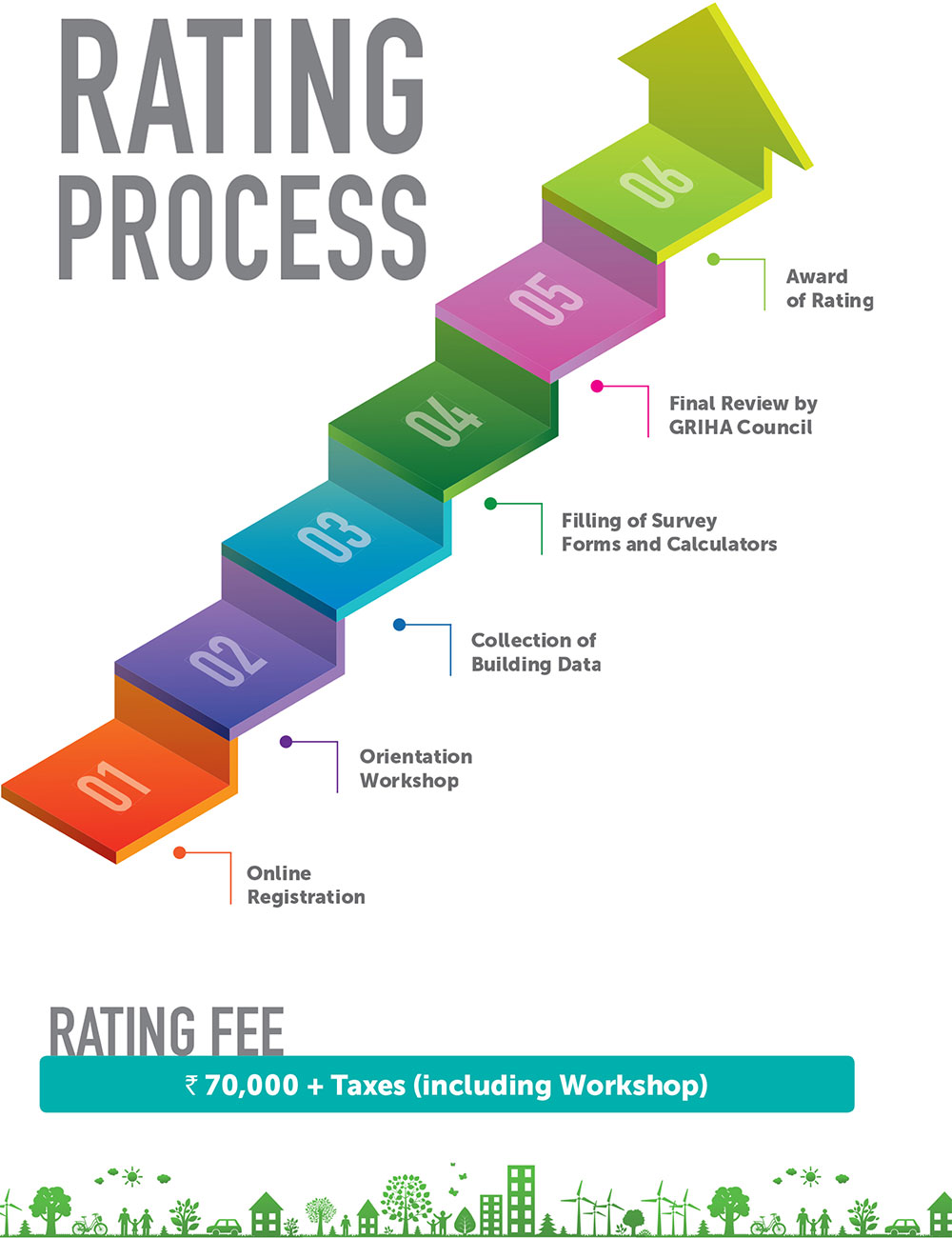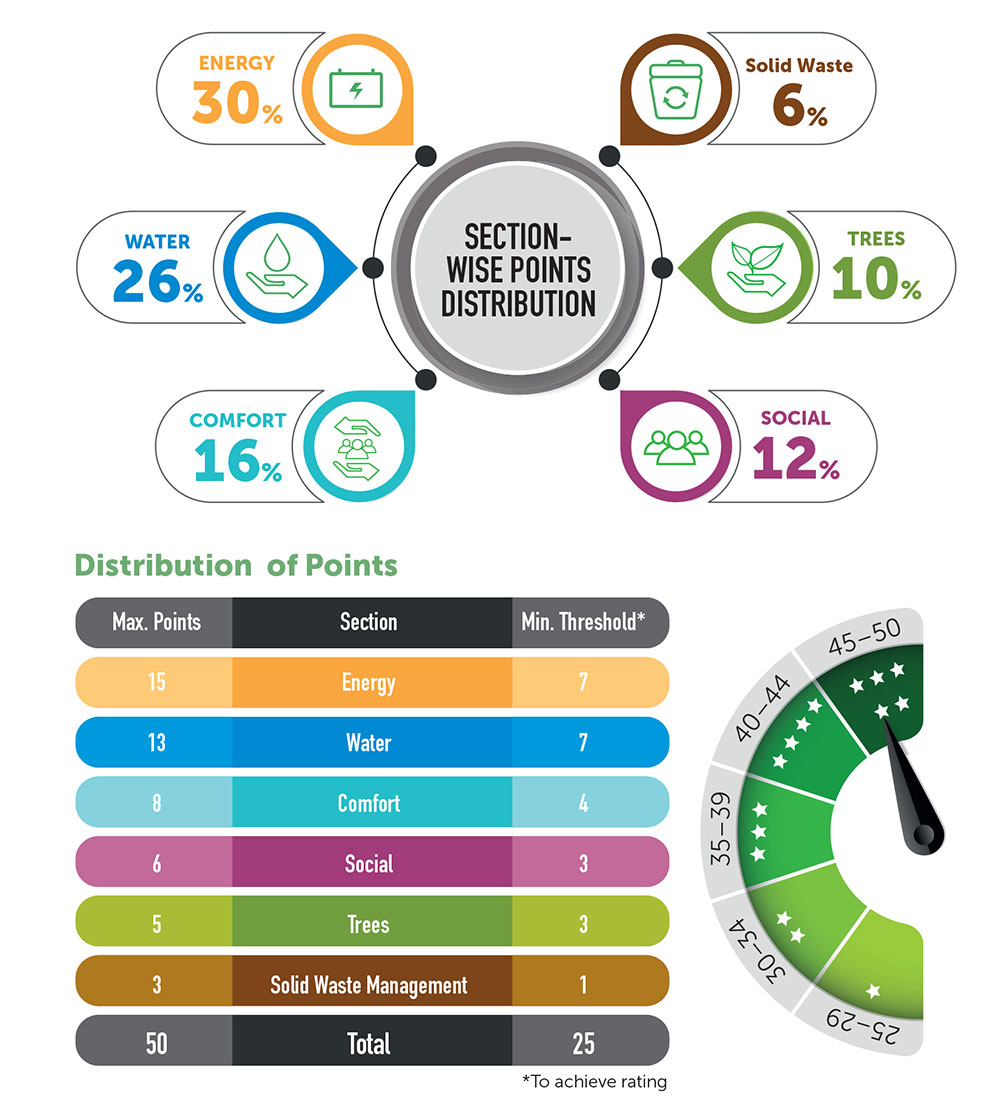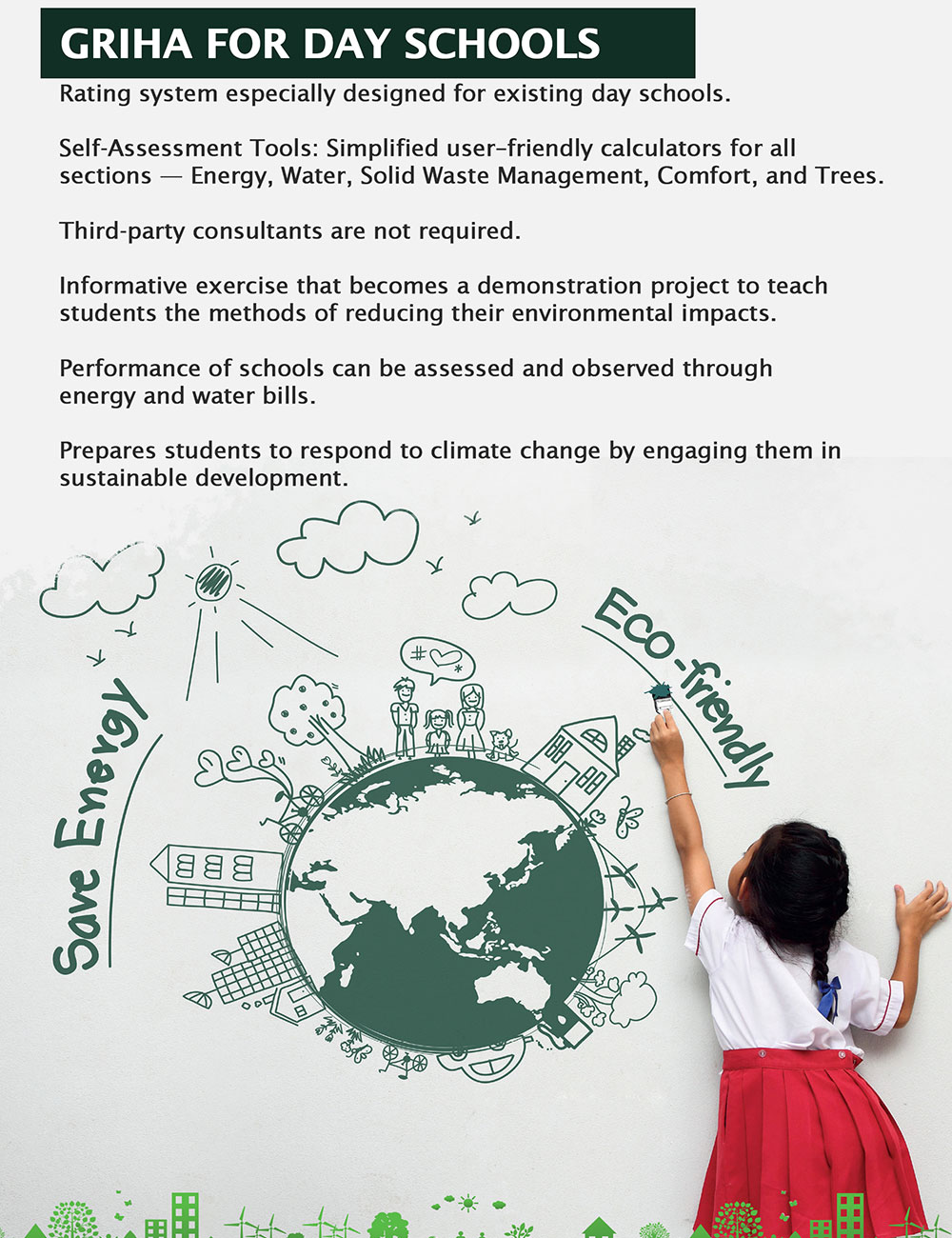GRIHA takes it a step forward by making children a torchbearer of change that we want to see around us. It has developed a green rating system for Existing Day Schools to train school students in assessing the environmental performance of their school against nationally-accepted benchmarks.

The world today is grappling with many banes of urbanisation. From the growing energy and water crises, to piling waste woes, filthy air and many more, that are cumulatively making life difficult for us and also our future generations. And even though sustainability may seem a lofty word, it is a pertinent issue that needs immediate attention and also action, of adults and children alike.
Working towards adopting an integrated approach towards sustainability, Green Rating for Integrated Habitat Assessment (GRIHA), the national green building rating system developed by The Energy and Resources Institute and supported by the Ministry of New and Renewable Energy, has been evaluating both new and existing buildings on various sustainability parameters, and rating them on a scale of one to five. In May 2019, it came up with a rating for Existing Day Schools, which is an assessment tool-cum-training module for school students, to evaluate the environmental performance of the school against nationally-accepted benchmarks.

Facts of the matter
Administered by GRIHA Council, the rating system for Existing Day Schools was introduced to instil the concepts of sustainability in the young minds, and hoping that the seed that are sown early on will be ingrained, nurtured and nourished over the years, and help them grow into responsible citizens. These green schools will train a brigade of young green ambassadors who would be equipped with skills and knowledge to makes their school building environment friendly. They will among other things, be trained to measure the resource status of their school, in terms of usage of energy and water, waste generation and biodiversity etc. Once they know the baseline, students will make efforts towards conservation and optimal use of resources and subsequently apply for green rating.

Keeping children in focus
The assessment-cum-rating tool evaluates overall environmental performance and provide simple and low-cost solutions for existing schools to achieve enhanced energy and water efficiencies, increased thermal, visual, and acoustic comfort, improved indoor air quality, and social integration. The tool involves students and teachers throughout the entire rating process and also sensitizes them towards their responsibility in the school.
Mode of action
Various activities are designed within the rating system to help school students understand and apply basic concepts of sustainability in their day-to-day life.
For example, children can be taught simple measures to protect their school building from extreme heat like painting the roof white.

Another example could be making students understand integration of day lighting in our buildings. A combination of day lighting helps us save electricity, on account of reduced use of artificial lighting. However, too less or too much, results in discomfort. So, our tool can help students assess the optimum use of glass and shading devices to achieve comfortable glare-free daylight.
It is a given that students might not be able to make amends in their school buildings, but the learning will come in handy later, for sure, and stand them in good stead. The hands-on learning also enables them to carry forward these lessons to their respective homes, making sure that society at large is also influenced by these activities.
